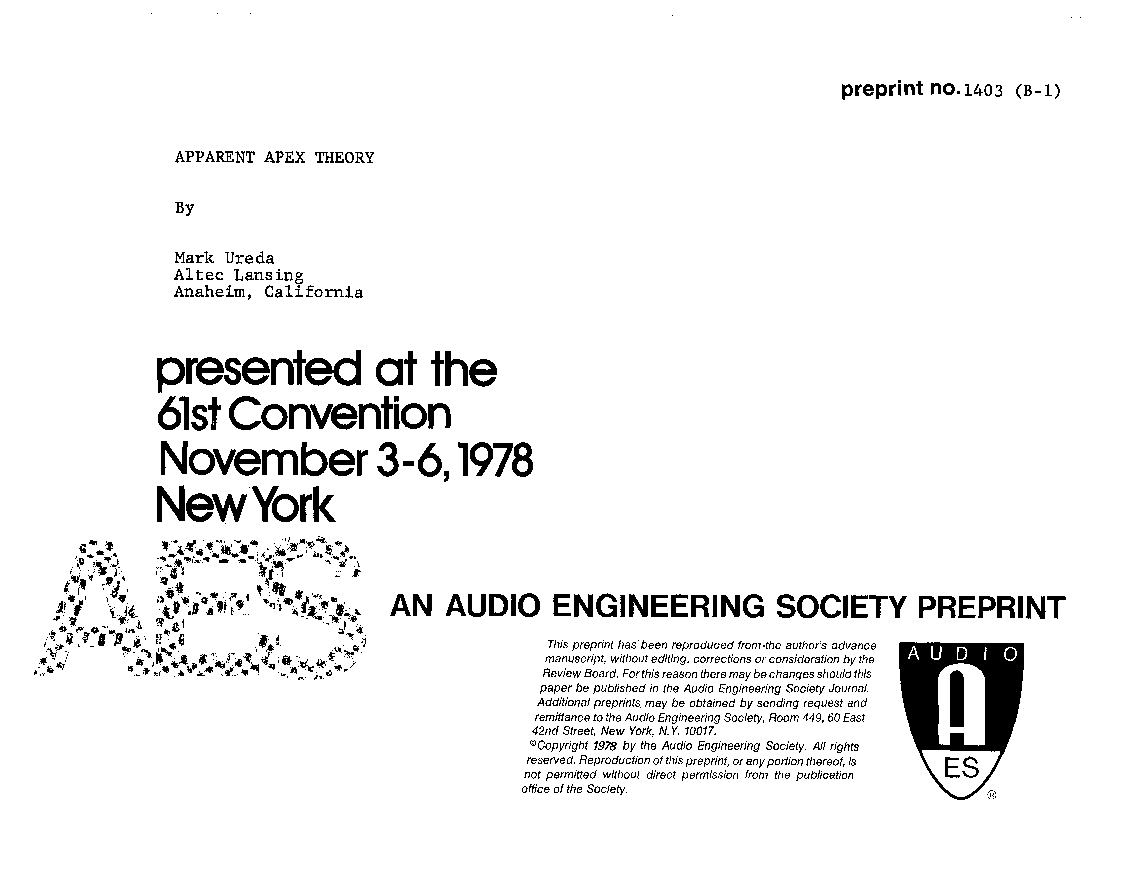Home / Publications / E-library page
You are currently logged in as an
Institutional Subscriber.
If you would like to logout,
please click on the button below.
Home / Publications / E-library page
Only AES members and Institutional Journal Subscribers can download
Current methods of measuring polar response curves are not sufficiently defined to yield representative farfield performance. It is shown that the conventionally measured -6 dB angle can be dependent on the point of rotation of the horn and the distance to the measuring microphone. A new methodology determines a point of rotation, the Apparent Apex, such that the measured coverage angle becomes independent of the distance to the microphone, thus allowing observation of farfield polar characteristics at close proximities.
Author (s): Ureda, Mark S.
Affiliation:
Altec Lansing, Anaheim, CA
(See document for exact affiliation information.)
AES Convention: 61
Paper Number:1403
Publication Date:
1978-11-06
Import into BibTeX
Permalink: https://aes2.org/publications/elibrary-page/?id=2951
(536KB)
Click to purchase paper as a non-member or login as an AES member. If your company or school subscribes to the E-Library then switch to the institutional version. If you are not an AES member Join the AES. If you need to check your member status, login to the Member Portal.

Ureda, Mark S.; 1978; Apparent Apex Theory [PDF]; Altec Lansing, Anaheim, CA; Paper 1403; Available from: https://aes2.org/publications/elibrary-page/?id=2951
Ureda, Mark S.; Apparent Apex Theory [PDF]; Altec Lansing, Anaheim, CA; Paper 1403; 1978 Available: https://aes2.org/publications/elibrary-page/?id=2951